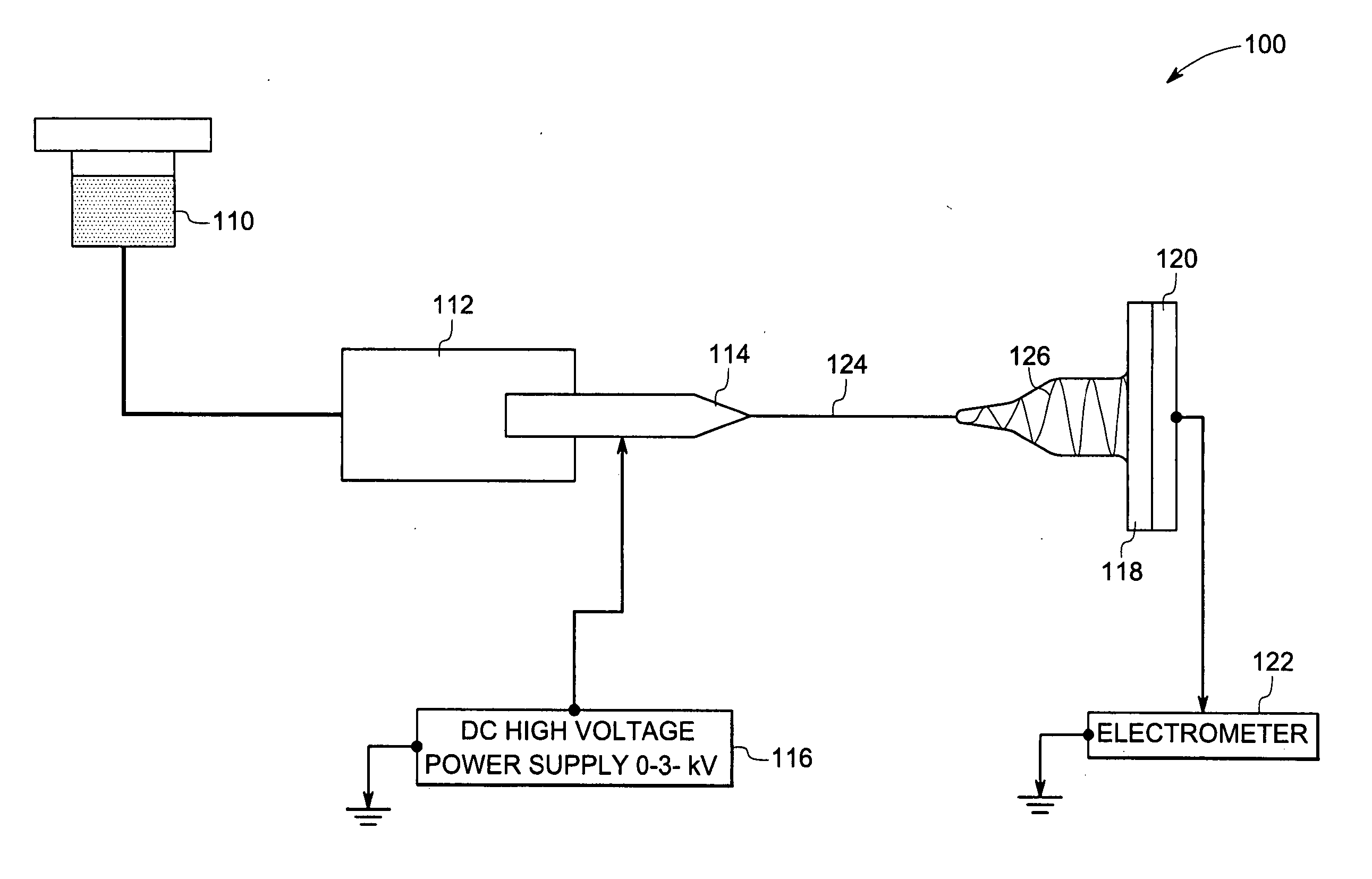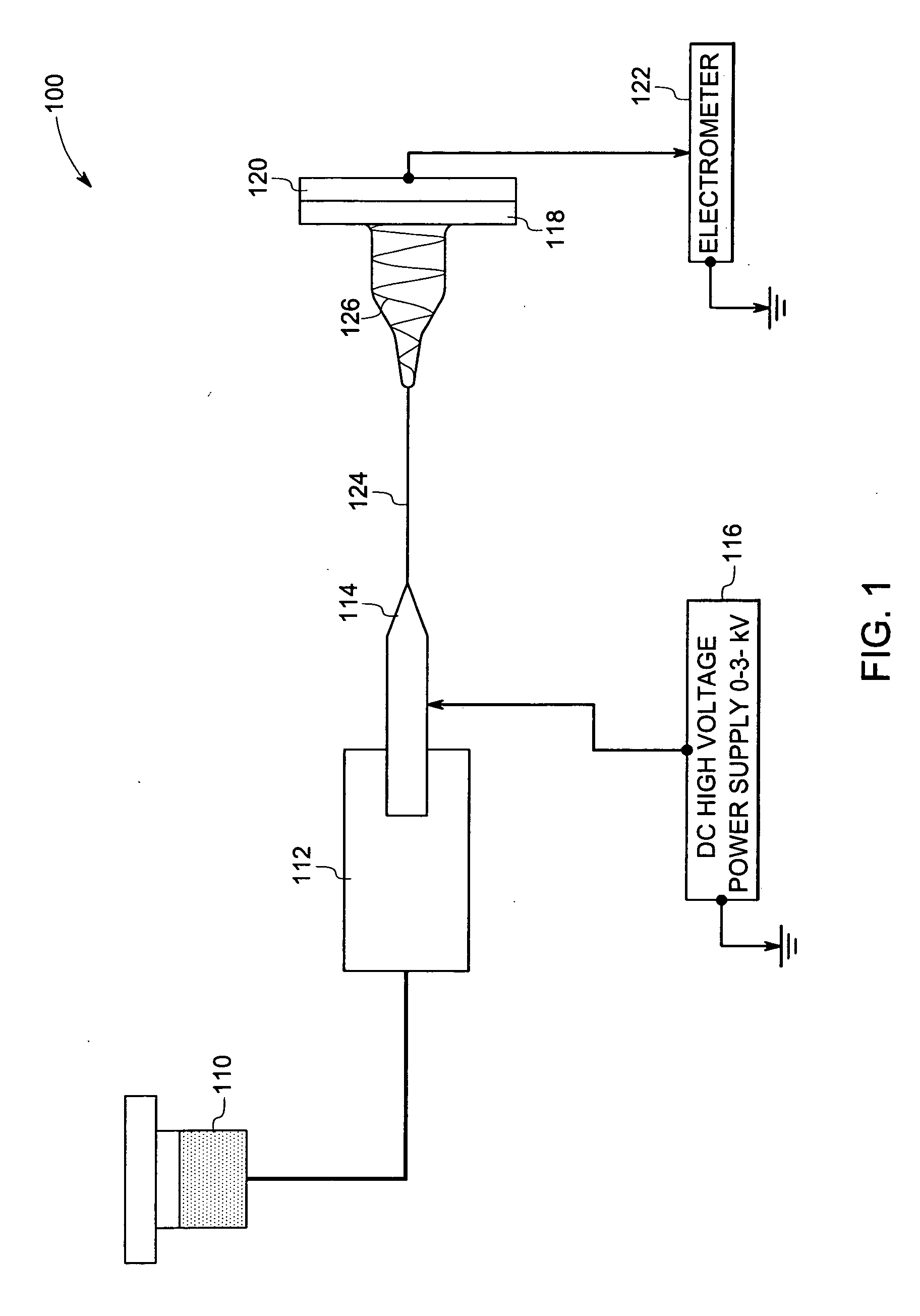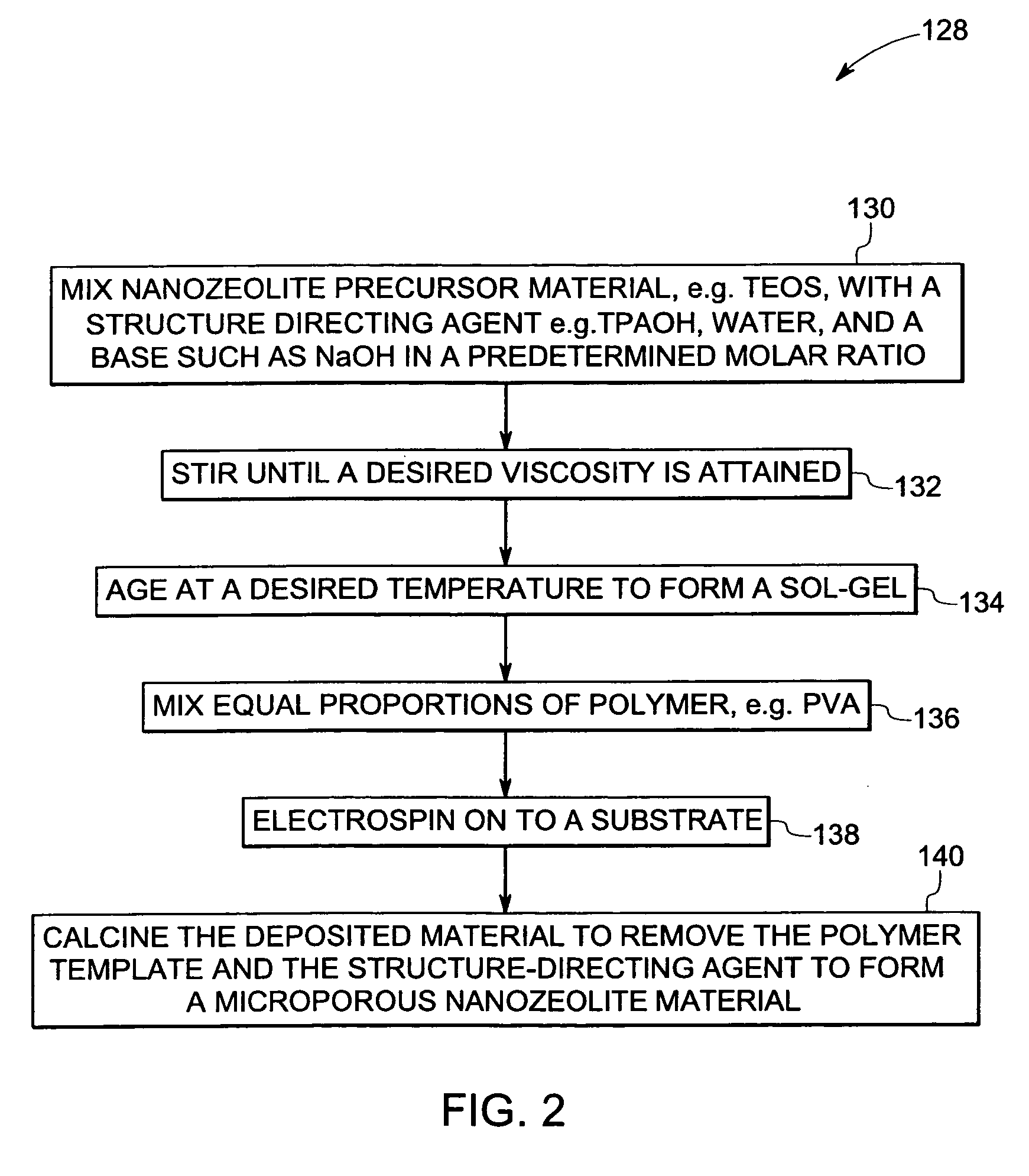Molecular structures for gas sensing and devices and methods therewith
a gas sensor and molecular structure technology, applied in the field of molecular structures, can solve the problems of inconvenient device use, cumbersome, time-consuming, etc., and achieve the effects of reducing the cost of gas sensors, and improving the sensing efficiency
- Summary
- Abstract
- Description
- Claims
- Application Information
AI Technical Summary
Benefits of technology
Problems solved by technology
Method used
Image
Examples
example 1
[0051] TEOS was mixed with a structure directing agent TPAOH, water, and NaOH, in a molar ratio of about 0.25:0.09:4.8:1.0. The mixture was subsequently stirred for about 4 to about 5 hours and aged at 70° C. for about 3 to about 6 hours resulting in a sol-gel. The resulting sol-gel was mixed in equal proportions with polyvinyl alcohol (PVA) and was used to electrospin the sol-gel and polymer solution directly on to a semiconductor substrate. The spinning distance was 15 cm and the applied voltage was 15 kV. After electrospun material deposited on the substrate is calcined at 500° C. for about 4 hours, to remove the polymer template and structure-directing agent to give a microporous nanozeolite material. FIG. 6 shows the scanning electron microscope (SEM) image of the microporous zeolites showing hybrid morphology 178. PVA enables the formation of needle-like structures 180.
example 2
[0052] TEOS was mixed with a structure directing agent TPAOH, water and NaOH in the molar ratio of about 0.25:0.09:4.8:1.0. The mixture was subsequently stirred for about 4 to 5 hrs and aged at 70° C. for 48 to 72 hours to form silicalite-1 zeolites. The synthesized silicalite-1 is powdered and calcined at 500° C. for about 4 hours to remove the structure directing agent. The powdered silicalite-1 particles are mixed with polyvinyl alcohol (PVA) to give it the required viscosity for spinning and electrospun to form microporous silicalite-1 nanozeolite. FIG.7 is a SEM micrograph showing microporous silicalite-1 with PVA after electrospinning. Silicalite-1 particles 184 of varied diameters can be seen embedded in polymeric fibers 182. The zeolite particle size can be controlled in the nanometer range to help enhance the active surface area of the sensing material and to help increase gas adsorption capability.
example 3
[0053] A sol-gel aqueous solution consisting of TEOS or tetra methyl orthosilicate (TMOS) with structure directing agent cetyltrimethylammonium bromide (CTAB) was used to synthesize mesoporous nanozeolite. The molar ratio of TEOS:Water:CTAB was fixed at about 4:8:1. TEOS was first hydrolyzed in an acidic environment (pH=1.85) and the resultant precursor solution is added drop-wise to the structure directing agent solution (CTAB) and aged for about 36 to about 48 hrs. A Brooke Field Viscometer was used to measure the sol-gel solution viscosity as a function of time and pH. The solution was electrospun and calcined at a spinning distance of about 7 cm to about 15 cm. The electrospun material was calcined at 500° C. for about 2 hour to evaporate the structure-directing agent to give mesoporous MCM-41 type nanozeolites with diameters in the micron to nanometer range with high aspect ratios. FIGS. 8, 9, 10 and 11 are SEM micrographs of MCM-41 type mesoporous nanozeolite materials. The en...
PUM
| Property | Measurement | Unit |
|---|---|---|
| diameter | aaaaa | aaaaa |
| diameter | aaaaa | aaaaa |
| diameter | aaaaa | aaaaa |
Abstract
Description
Claims
Application Information
 Login to View More
Login to View More - R&D
- Intellectual Property
- Life Sciences
- Materials
- Tech Scout
- Unparalleled Data Quality
- Higher Quality Content
- 60% Fewer Hallucinations
Browse by: Latest US Patents, China's latest patents, Technical Efficacy Thesaurus, Application Domain, Technology Topic, Popular Technical Reports.
© 2025 PatSnap. All rights reserved.Legal|Privacy policy|Modern Slavery Act Transparency Statement|Sitemap|About US| Contact US: help@patsnap.com



